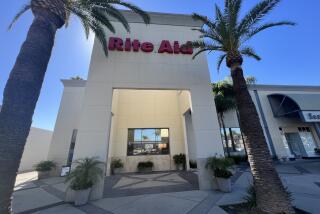Imperial S&L; Will Shrink Its Assets, Change Strategy
- Share via
SAN DIEGO — Stung by its forays into unconventional loan activities, Imperial Corp. of America said Thursday that its Imperial Savings of California unit will shrink assets by 17% and reroute itself into more “traditional thrift activities.”
Imperial also said it expects to report a loss for the second quarter ended June 30, in part because of fallout from its purchase of a fraud-ridden auto loan portfolio from Glendora-based Grand Wilshire. Loan-loss provisions taken for the Grand Wilshire portfolio were largely responsible for Imperial’s $25.2-million fourth-quarter 1988 loss and its minimal profit in this year’s first quarter.
The plan to shrink assets by $2 billion is Imperial’s direct response to stiffer, risk-based capital standards for savings and loans to be included in the $300-billion S&L; rescue bill being considered by Congress. To shrink assets, Imperial said Thursday that it will sell its $400-million auto lease portfolio and its $275-million bank card business as well as reduce its $1.35-billion “junk bond” portfolio. The company wouldn’t specify the amount of reduction in its junk bonds, which represent 12% of Imperial’s $11.9 billion in assets. The moves are to boost capital as a percentage of assets.
While declining to specify the expected second-quarter loss, Imperial said it would make loan-loss provisions totaling at least $26 million to cover bad consumer and mobile home loans. Imperial also said it anticipates a $10-million loss on the sale of its auto lease portfolio and a $22-million writedown in the value of certain junk bonds.
Analyst Allan Bortel of Shearson Lehman Hutton in San Francisco estimated that the loss could total as much as $30 million.
Imperial’s change in strategy, announced after a daylong directors meeting, had been expected for the past week and follows by three days the resignation of Imperial President Kenneth Thygerson by “mutual agreement” with Imperial’s board. Thygerson was replaced by board member Allan Tessler, a New York attorney and financier.
After taking over as head of Imperial in September, 1985, Thygerson led the thrift into several non-traditional S&L; activities, including car and mobile home loans and junk bonds, saying Imperial could not compete with larger S&Ls; in “plain vanilla” activities such as residential home lending. Imperial is the nation’s 16th-largest thrift in terms of assets.
The S&L; bailout bill will not only affect S&Ls; such as Imperial by forcing a reduction of junk bond investments but could also eventually disallow the inclusion of goodwill in figuring shareholder equity. Carried as an asset on a company’s balance sheet, goodwill is the amount of a purchase price above the book value.
More to Read
Inside the business of entertainment
The Wide Shot brings you news, analysis and insights on everything from streaming wars to production — and what it all means for the future.
You may occasionally receive promotional content from the Los Angeles Times.










